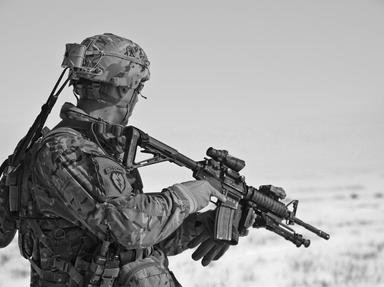Quiz Answer Key and Fun Facts
1. In the 13th century, armies in China, Mongolia, and Arabia made projectiles of gunpowder, which have been called what historically?
2. In the 18th century, missile technology inched a tiny bit closer to modern-day missiles. In 1792, Tipu Sultan launched an early form of rocket in a barrage against British troops. Where did Tipu Sultan rule?
3. The early 19th century saw what British Army officer (with the same name as a British Restoration playwright/poet) first demonstrate his solid fuel rockets at the Royal Arsenal munitions manufacturer in 1805?
4. The mid-20th century saw which German aeronautical engineer develop the V-2 rocket?
5. Between 1957 and 1972, the Soviet Union and United States engaged in the build-up of missile defensive and offensive weapons, leading to SALT talks in 1972 between President Nixon and what world leader?
6. The 1980s saw very ultra-imaginative visions of missile defense, as in 1983, when President Ronald Reagan announced his SDI missile defense plan, that was nicknamed what? (By some derisively and by some favorably)
7. Which of these missiles started development before the others?
8. The first decade of the 2000s saw which U.S. politician effectively cut billions of dollars from the development of futuristic missile defenses?
9. Operational in April 2017, the David's Sling system is which country's air defense system devised to intercept and destroy short- to medium-range ballistic missiles?
10. Which of these technologies has begun development, according to the U.S. Space Force and the Missile Defense Agency?
Source: Author
Billkozy
This quiz was reviewed by FunTrivia editor
trident before going online.
Any errors found in FunTrivia content are routinely corrected through our feedback system.
